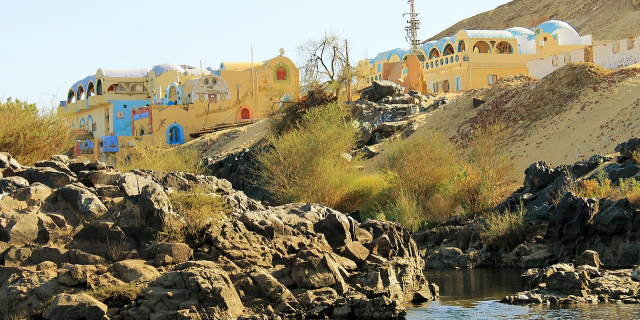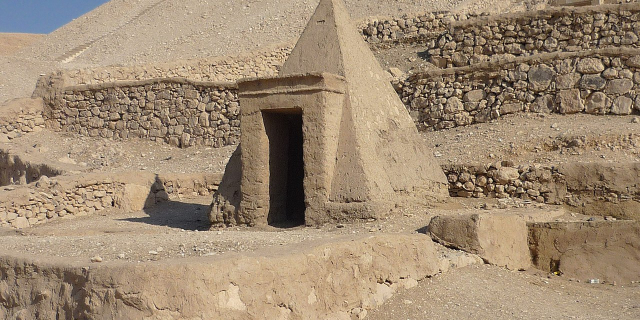معبد بيت الوالي
( Temple of Beit el-Wali )The Temple of Beit el-Wali is a rock-cut ancient Egyptian temple in Nubia which was built by Pharaoh Ramesses II and dedicated to the deities of Amun-Re, Re-Horakhti, Khnum and Anuket. It was the first in a series of temples built by Ramesses II in this region; its name Beit el-Wali means 'House of the Holy Man' and may indicate its previous use by a Christian hermit at some point in time. The temple was relocated during the 1960s as part of the International Campaign to Save the Monuments of Nubia as a result of the Aswan High Dam project and moved towards higher ground along with the Temple of Kalabsha. This move was coordinated with a team of Polish archaeologists financed jointly by a Swiss and Chicago Institute respectively. The temple was located 50 kilometres south of Aswan.
 Earliest photo, 1854 by John Beasley Greene
Earliest photo, 1854 by John Beasley GreeneThe Nubian temples of Ramesses II (i.e. Wadi es-Sebua, Beit el-Wali and Abu Simbel), were part of a state sponsored policy designed to maintain Egyptian control over this area.[1] During the New Kingdom period of Egypt, Nubia was not only ruled by Egyptian officials but also subject to:
a deliberate policy of acculturation, the intention of which was to break down Nubian identity. Many leading Nubians were educated in Egypt and adopted Egyptian dress, burial customs and religion. They spoke the Egyptian language and even changed their names to Egyptian ones. the decoration of the temples was to some extent royal propaganda intended to intimidate the [local] population.[1]























Add new comment